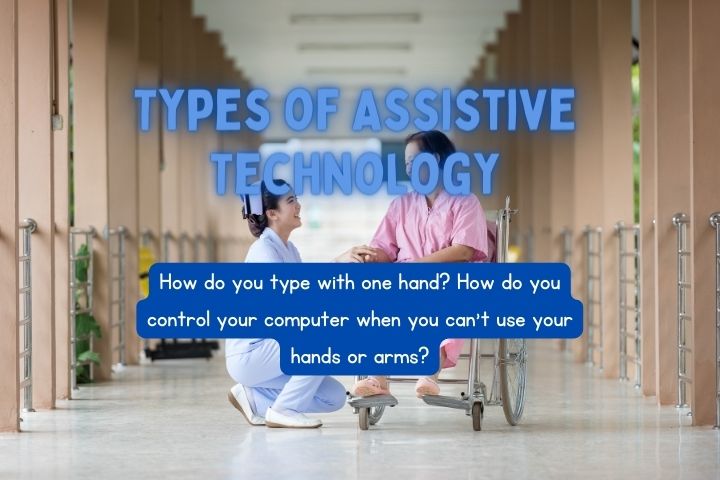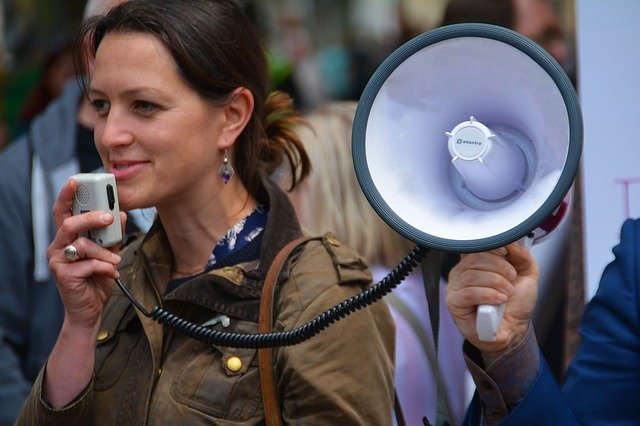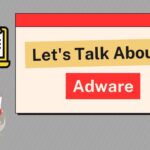How do you type with one hand? How do you control your computer when you can’t use your hands or arms? If these are questions you’ve ever asked yourself, you’re not alone. Millions of people around the world use assistive technology to help them live their lives to the fullest.

In this blog post, we’ll explore the different types of assistive technology and how they can help you achieve your goals. Whether you’re a student, a worker, or just trying to stay connected with friends and family, there’s an assistive technology tool that can help make life easier for you.
Table of Contents
What is Assistive Technology?
Assistive technology is any type of device or software that can be used to improve the functionality of a person with a disability. Assistive technologies can be used for communication, mobility, daily living, and more.
Assistive technology is made to assist learners who are experiencing disabilities in learning. It doesn’t matter if the student has a physical impairment, cognitive issues, or dyslexia; assisted technology can help them work and function in the classroom. Assistive technologies include any form of device or equipment, which allows students to compensate for their learning capabilities.
Some common examples of assistive technology devices include:
- Adaptive keyboards
- Alternate computer mouse devices
- Communication devices
- E-readers
- GPS devices
- Head tracking systems
- Joysticks
- Mouth sticks
- Onscreen keyboards
- Power wheelchair controls
- Switch interfaces
These are just a few examples of the thousands of assistive technology devices and software programs that are available. When it comes to choosing the right tool for you, it’s important to work with an assistive technology specialist who can help you identify your needs and match you with the right device or software.
How Assistive Technology Can Help
Assistive technology can be used in a variety of ways to help people with all types of disabilities. Here are just a few examples of how assistive technology can help:
- Students with disabilities can use assistive technology to help them with reading, writing, and participating in class.
- People who are blind or have low vision can use assistive technology to help them read books, newspapers, and other printed materials.
- People who are deaf or hard of hearing can use assistive technology to help them communicate with others.
- People with mobility impairments can use assistive technology to help them with daily living activities, such as dressing and eating.
- People with cognitive disabilities can use assistive technology to help them with memory, organization, and task completion.
No matter what your needs are, there’s an assistive technology tool that can help you live your life more independently.
How to Get Started With Assistive Technology
If you’re interested in learning more about assistive technology, the best place to start is by talking to your doctor or another medical professional. They can assess your needs and make recommendations for devices or software that might be right for you.
You can also contact your state’s Assistive Technology Program for more information and resources.
If you’re a student, you can also talk to your school’s special education department about the available types of assistive technology.
And if you’re a worker, you can talk to your employer about using assistive technology on the job.
Types of Assistive Technology
Vision
There are many devices available to assist people who are blind or visually impaired with daily living activities, accessing computers, and moving around independently.
Examples include magnifiers, talking devices such as thermostats, Braille displays, screen reading software, text-to-speech systems using Optical Character Recognition (OCR), large print materials, and phones with large tactile buttons.
By using some or all of these tools, people who are blind or visually impaired can live more independently and participate more fully in the world around them.
Hearing
There are many devices available to help those who are Deaf or hard of hearing with daily living activities, communication, and other needs.
Some examples include personal amplification systems, wireless TV listening systems, vibrating alarm clocks, doorbells with flashing light alerts, portable closed captioning systems, face-to-face dual keyboard communication systems, amplified telephones, and phones with captioning, and mobile devices with texting or specialized apps. These products can help people stay connected with loved ones, access information, and stay safe in their homes and communities.
Speech communication
People with speech disabilities have a variety of options when it comes to communication aids. Voice amplification systems, for example, can be used to make loud or soft sounds louder, making it easier for others to hear.

Fluency assistance devices can help those who stutter by providing a consistent beat or rhythm to speak to. An artificial larynx is a device that generates artificial speech sounds, which may be useful for people who cannot use their natural voice.
Communication boards are another option, which use pictures or symbols to represent words or phrases. Some people also find speech output software and symbol-making software helpful in communicating their thoughts and ideas.
And, there are speech-generating devices, which create a synthesized speech based on the user’s input. All of these products can help people with speech disabilities to better communicate their thoughts and ideas to others.
Learning
Learning is a complex process that involves many different skills and abilities. For some people, learning can be more difficult than for others. There are many assistive devices available that can assist people with learning, attention, memory, and organization.
Memory aids, text-to-speech systems, reminder systems, notetaking systems, mobile devices with specialized apps, and audiobooks are all examples of products that can help people with learning difficulties.
By using one or more of these products, people with learning difficulties can improve their ability to learn and remember information.
Mobility
For people with mobility impairments, there is a wide range of assistive technology available to help them move around more easily. This includes wheelchairs, walkers, canes, crutches, scooters, and power chairs. In addition, there are also products designed to provide postural and pressure management.
This assistive technology can help people with mobility impairments to lead more independent and active lives.
Vehicle
People with disabilities often face barriers to transportation. Modifications to vehicles can promote safe access and increase independence. Hand controls, for example, allow people with limited use of their legs to drive.
Tie downs and ramps can secure a wheelchair in the vehicle and provide access to the vehicle, respectively. In addition, raised roofs and adaptive seat belts accommodate people of different sizes. These modifications give people with disabilities greater freedom to travel.
Computers
Computers have become an essential part of our lives, and for many people, they are an indispensable tool. However, for some people with disabilities, computers can be difficult or even impossible to use. Fortunately, several products can help people with disabilities access and use computers.
These products include specialized software such as screen magnification software for people with low vision, alternative keyboards, and input devices, and voice recognition. By using these products, people with disabilities can enjoy the same benefits that everyone else enjoys from using computers.




